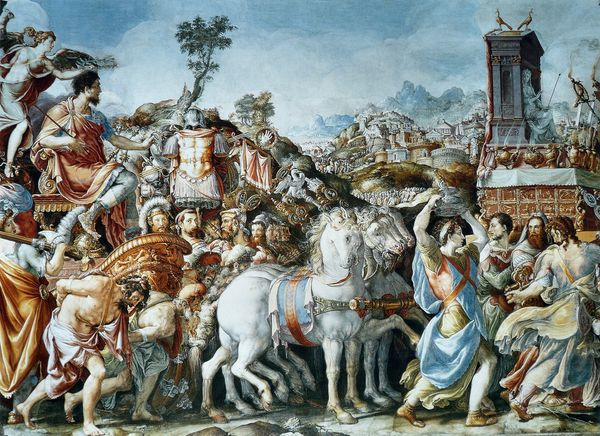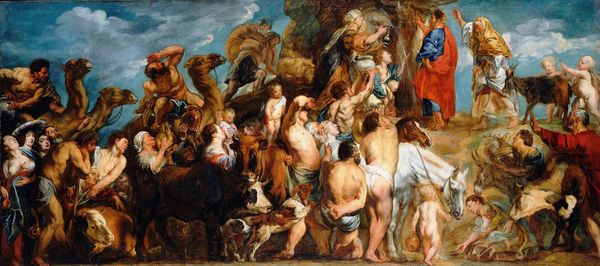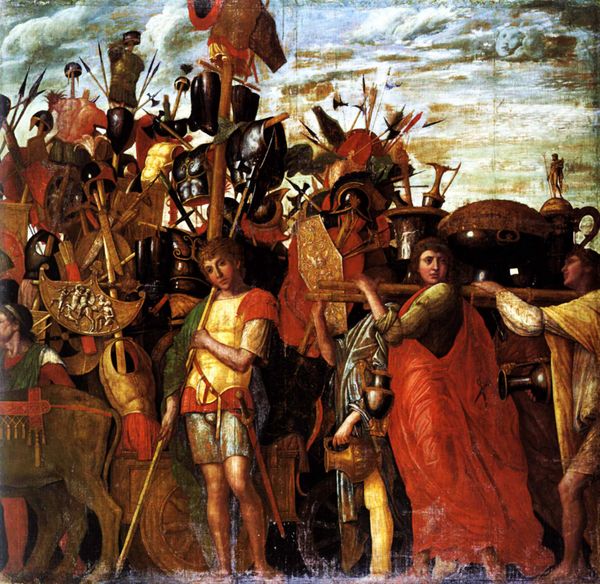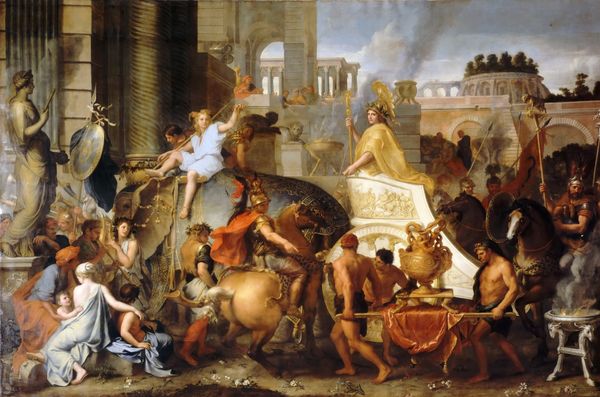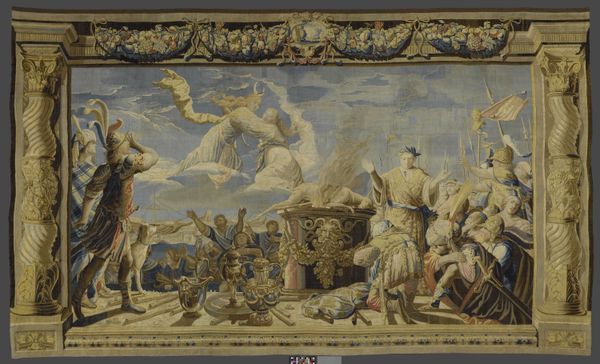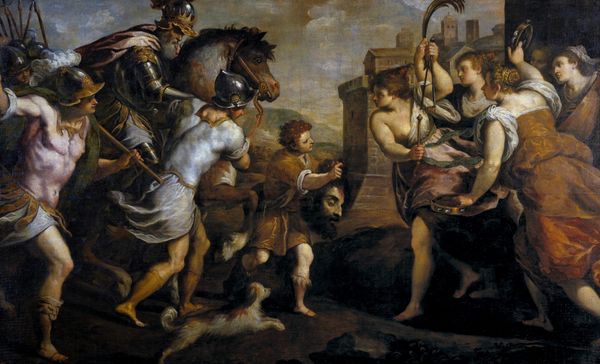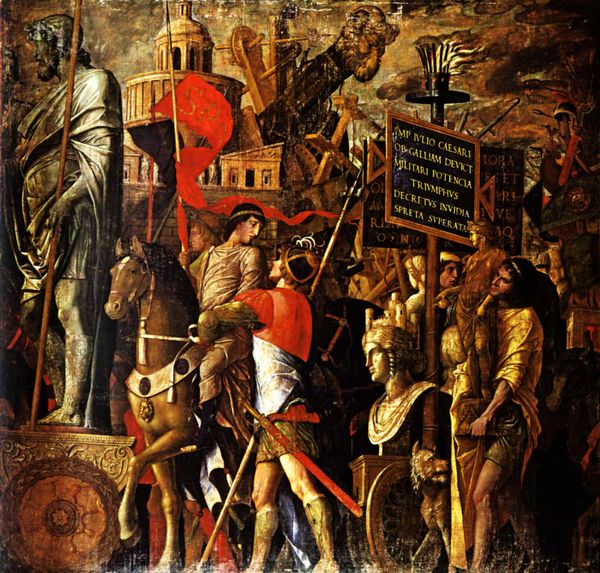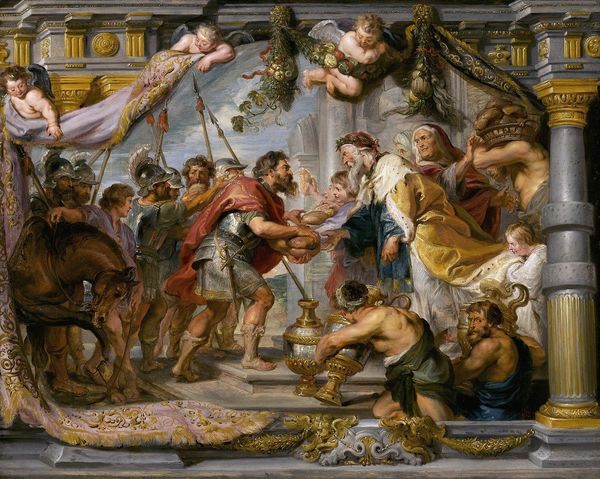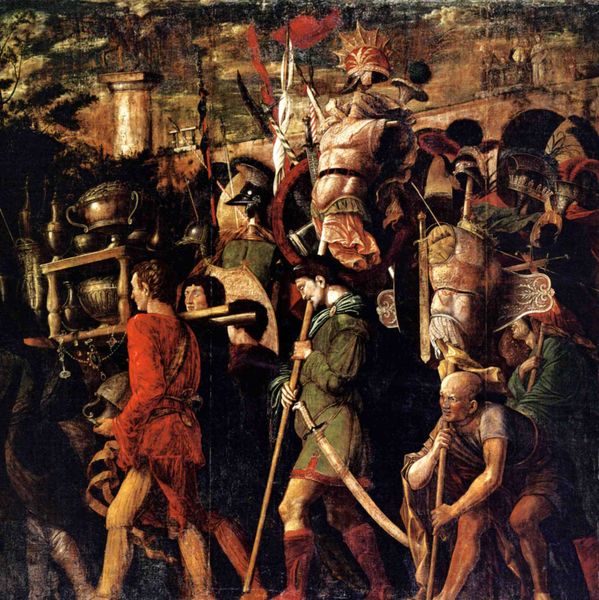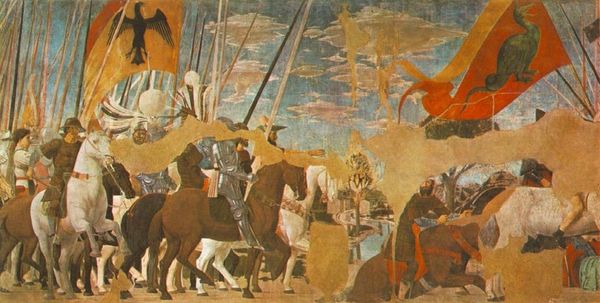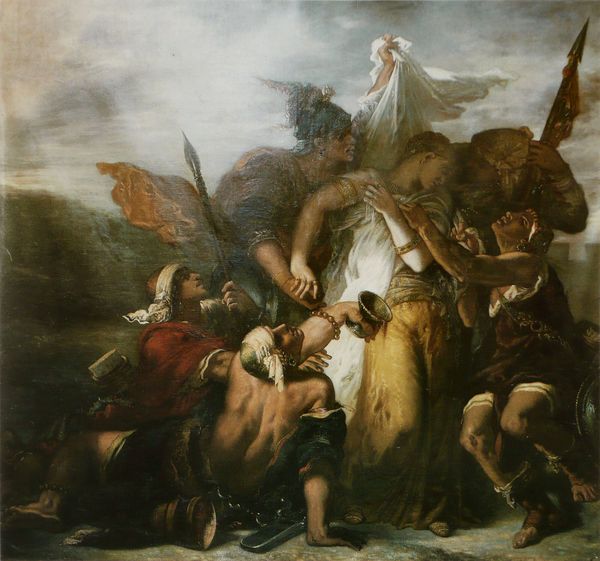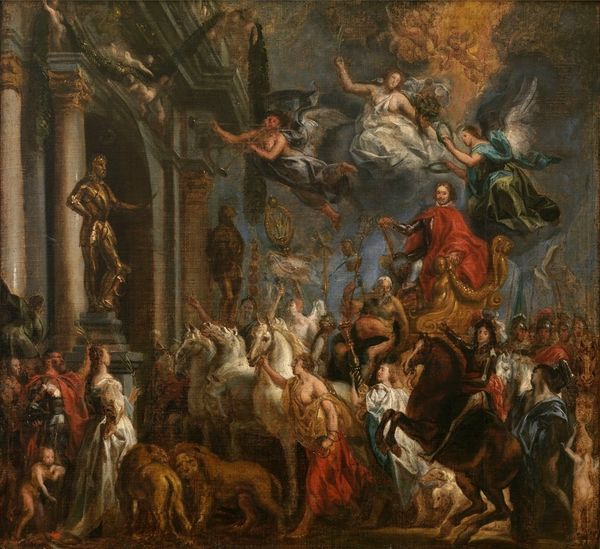
oil-paint
#
figurative
#
allegory
#
baroque
#
oil-paint
#
figuration
#
oil painting
#
history-painting
#
portrait art
Copyright: Public Domain: Artvee
Peter Paul Rubens’ painting, “Caesar’s Triumph,” showcases a complex layering of figures and objects, creating a scene bursting with dynamic energy. The colour palette is rich, dominated by warm tones that evoke the pomp of a triumphal procession, whilst the composition features a blend of vertical and diagonal lines, adding to the sense of movement. Rubens masterfully employs a semiotic system rooted in classical antiquity. The statue of Caesar, the soldiers, and the captured spoils are all signs that point towards a narrative of military victory and imperial power. Yet, it is not a straightforward celebration. The dense arrangement and the dynamic brushwork create an effect that destabilizes the singular meaning of the event. Look closely at how the figures interact; the expressions, gestures, and arrangements subtly question the nature of power and triumph. Rubens reminds us that even the most imposing images are open to interpretation, reflecting not just the values of a particular time but inviting ongoing discussion and re-evaluation.
Comments
No comments
Be the first to comment and join the conversation on the ultimate creative platform.
